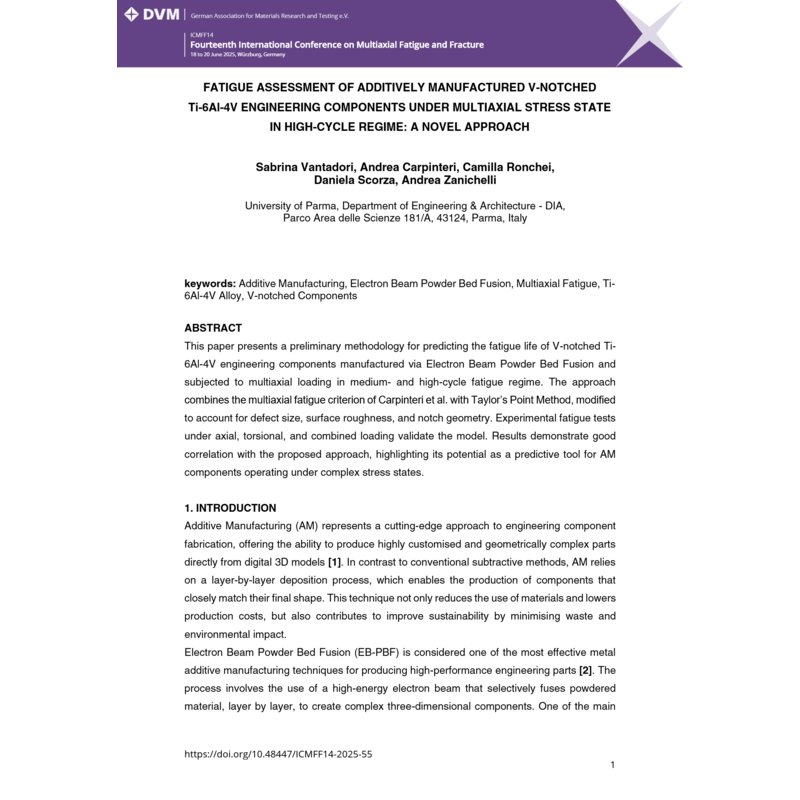- Nur online erhältlich



The Ti6Al4V alloy is widely recognised for its outstanding mechanical properties, including a high strength-to-weight ratio, excellent corrosion resistance, and remarkable fatigue strength [1]. Traditional manufacturing methods for engineering components made of Ti6Al4V include forging, machining, investment casting, and sheet metal forming. Each of these methods is optimised to enhance the alloy inherent strength and corrosion resistance, making it suitable for aerospace, biomedical, and broader industrial applications [1]. However, these methods have notable drawbacks, such as high machining costs (due to tool wear caused by the alloy hardness), limited design flexibility in forging and casting, and significant material waste, especially in…

Datenschutzbedingungen (bearbeiten im Modul "Kundenvorteile")

Lieferbedingungen (bearbeiten im Modul "Kundenvorteile")

Rücksendebedingungen (bearbeiten im Modul "Kundenvorteile")
The Ti6Al4V alloy is widely recognised for its outstanding mechanical properties, including a high strength-to-weight ratio, excellent corrosion resistance, and remarkable fatigue strength [1]. Traditional manufacturing methods for engineering components made of Ti6Al4V include forging, machining, investment casting, and sheet metal forming. Each of these methods is optimised to enhance the alloy inherent strength and corrosion resistance, making it suitable for aerospace, biomedical, and broader industrial applications [1]. However, these methods have notable drawbacks, such as high machining costs (due to tool wear caused by the alloy hardness), limited design flexibility in forging and casting, and significant material waste, especially in subtractive processes.
These challenges have been effectively addressed by additive manufacturing, which enables the production of complex and lightweight geometries that are difficult or impossible to achieve with traditional techniques. Additionally, it minimises material waste, shortens lead times, and facilitates customised production. The process parameters of the additive manufacturing method (such as, Selective Laser Melting, Electron Beam Melting and others) strongly influence the fatigue performance of engineering components, since they affect material properties such as surface roughness, porosity and others.
In this context, a preliminary analytical methodology is proposed for the fatigue assessment of V-notched engineering components made of additively manufactured Ti6Al4V alloy under multiaxial medium- and high-cycle fatigue. This methodology combines the multiaxial fatigue criterion of Carpinteri et al. [2] with Taylor’s Point Method [3], modified to account for defect size, surface roughness, and notch geometry.
Specifically, the critical distance is defined as a function of: (i) the control volume radii provided by the Strain Energy Density (SED) criterion [4,5], that accounts for internal discontinuities; (ii) the biaxiality ratio; (iii) the ratio between the fatigue strength of notched specimens under Mode III and Mode I loading; and (iv) the surface roughness.
The proposed analytical methodology is validated through experimental tests performed on additively manufactured Ti6Al4V components produced by Electron Beam Powder Bed Fusion. These components have been subjected to Mode I, Mode III, and Mixed Mode (I+III) medium- and high-cycle fatigue loading. A comparison between experimental data and predicted results demonstrates the effectiveness of the proposed approach.